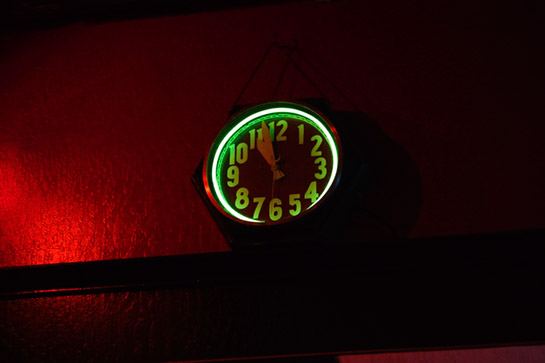How to tell a story with pictures (part 3)

There’s a type of puzzles called connect the dots: A sheet of paper contains a set of dots that have numbers next to them, and when you connect the dots in order you get a simple line drawing. You can tell stories with pictures that way, ideally in a book: One photograph brings you to the next, which then bring you to the next etc. etc., and there is your story! Phrased this way, the connect-the-dots type of photographic storytelling sounds incredibly simple, if not outright simplistic, but usually, it’s anything but. The reason is that unlike in that puzzle what you start out with are just dots or, to stay in the picture developed in previous articles, clouds. Which one is first? Which one will come second? And how do you know that a dot or cloud has to go, in other words how do you edit? (more)
It’s no secret that most photographers are terrible at editing their own work. Photographers typically edit like drunk sailors, who can’t look straight any longer and who are afraid of letting go of anything - lest everything falls over. Photographers sometimes are such bad editors that they can’t let go of a project (that’s really just a variant of being a bad editor): The idea that they have to take those additional five or ten photographs so that the story will really be whole prevents them from seeing that it’s all there, right in front of their eyes.
Mind you, there is a very simple solution for this problem: Work with someone you can trust, in other words someone who is photographically competent and honest, a person who will ruthlessly purge all the nonsense you want to keep. Of course, this will only work if you accept your (co-)editor’s advice (a lot of photographers “solve” the editing problem by working with editors and by then not listening).
Thus, without a good edit it’s very hard, if not impossible to tell a story. My advice typically is to start with a very small, tight edit, something that can easily and obviously bring you from the beginning to the end. The details can be filled in later; there is no need to worry about them as long as the skeleton is not in place. Regardless of how you want to tell your story, trying to get the basic outline in place might simply be the best approach to it: If you story won’t work with 15 pictures, in all likelihood it won’t work with 50, either.
But to make an edit you also need to think about how you are going to tell your story. There are many different ways to do it. The connect-the-dots method I mentioned earlier might be one of the most popular ones. Being able to connect the dots helps making an edit: If you can’t connect a dot then, well, it just doesn’t fit in. Needless to say, there are some “specialists” who can connect each and every dot to possibly everything, so it’s good to have an editor to work with.
There is no need to repeat my ideas from the first part of this series here. But it still is worthwhile to talk about the dots versus clouds picture again. If you have dots, you need to connect them. If you have clouds, you don’t necessarily need to do that, because they might overlap on their own. Regardless of which side you pick - photographs as dots or clouds - your choice will result in you having to think about how to tell the story.
Let’s say you have an edit, a group of photographs you want to use to tell a story. How do you go about this? Obviously, the first thing you need is, well, a first photograph. Where, how do you start? Which of the many photographs do you pick? There might be a logic in your photographs, which rules out quite a few easily (possibly because of an elements of time, say).
But to tell a story, you can’t just think about the photographs only. You also need to think about the story itself: What does your story require as a foundation? How do you set the stage? For example, if your story revolves around a person, then you need to introduce that person in some way. You have to decide where and when to do that. Do you introduce the person first and then expand the world around her/him? Or do you do it the other way around, building a “picture” of a place and then putting the person into it?
If you think of photographs as dots, as those little factlets, you’ll have to immediately start playing your game connecting them, thinking about how to get from the first one to the next one etc. If you think of photographs as clouds, as entities that create certain experiences, things are a little different. You can think about connecting them, but you can also think about letting them just be. Letting them be is maybe similar to throwing a bunch of stones into a lake and to then watch the circular waves create a complex pattern on the water’s surface.
It would seem that it’s much harder to tell a story that way, and it might be. But as a flurry of recent photobooks using that very method have shown, it not only can be done, it can be done very successfully.
(to be continued)
 By
By